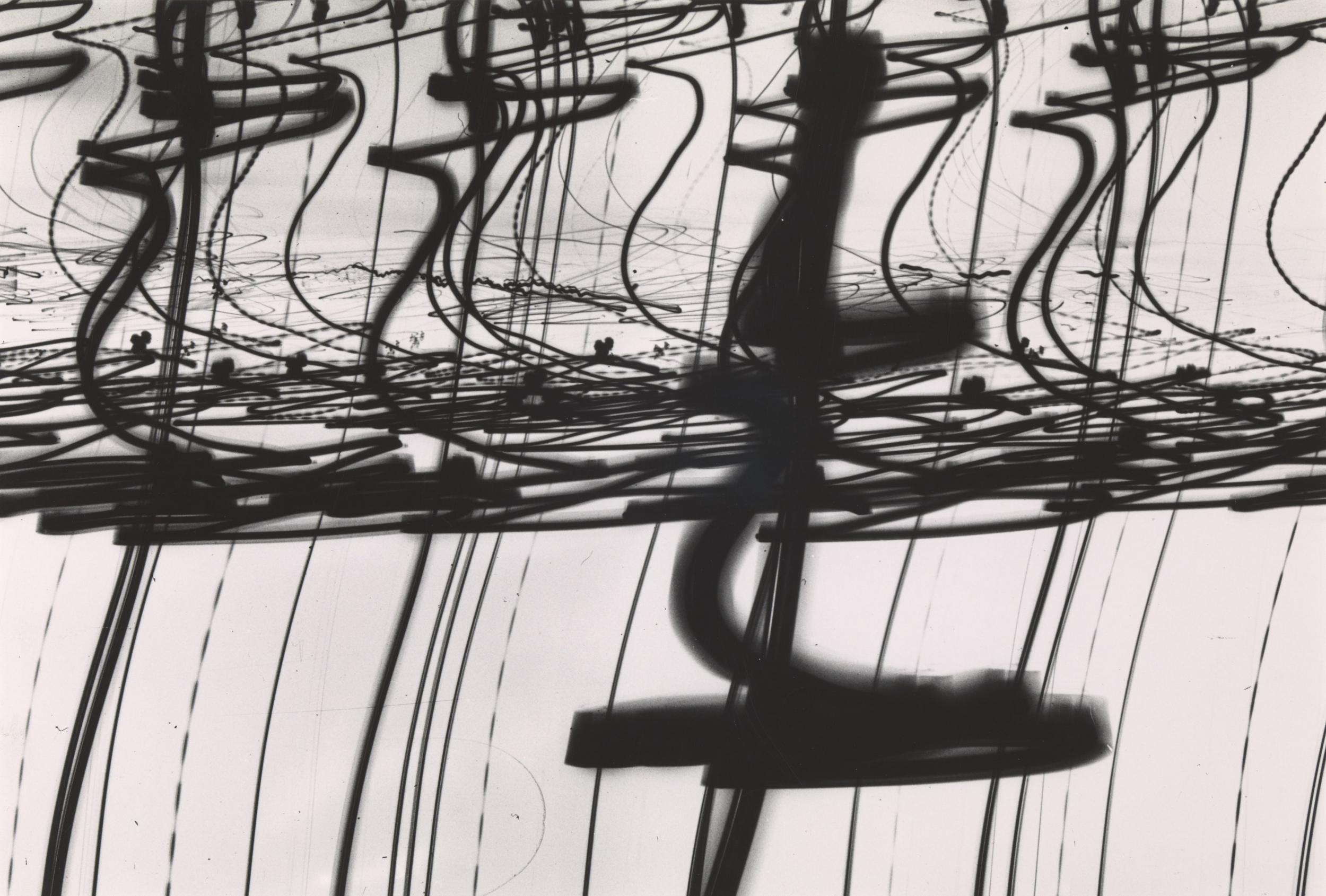Shape of Light: 100 years of photography and abstract art, Tate Modern, London, review: Clangorously dull and yawn-worthy
An absurdly over-large, tediously repetitive exhibition of distorted photographs

It would be rather unfair to argue that it might just prove to be more visually entertaining and spiritually illuminating to spend one’s entire life confined inside an empty, discarded chip bag on some wind-harried street corner in, say, Salford, than to devote an hour (or, preferably, less) to this new exhibition at Tate Modern.
Nevertheless, it wouldn’t be far from the truth.
This is one of the most clangorously dull and yawn-worthily repetitious shows that Tate Modern has managed to pull out of its deep, saggy sack of mixed marvels for many a long year.
It is over-large, absurdly so – do we really need quite this many objects on display? Does it really have to go on and on and on as it does? It could have been trimmed back to one quarter of its size and still made its point quite as tellingly.
Its creation has been urged into being, we feel, by an obsessive (or perhaps a small, tight cabal of the same) who will never quite get to the bottom of their subject because they have no appetite to do so. It is just too insanely important to them. Why not a book though, in a very small run indeed, priced at, say, £2,500 per copy? That would have been much less of a public nuisance.
Shape of Light‘s subject is how photography transformed itself from around 1910 (the year, you may remember, when Virginia Woolf, that reckless, ceaselessly entertaining polemicist, declared that human nature changed forever) to about the present. In 1910 (or thereabouts), the show argues, photography began to be much more experimental than it had ever managed to be in the past; to lean, in fact, in the direction of abstraction, to embrace blur and distortion and swimminess in order to make the world and all it contains look as odd and unlike itself as possible.
In fact, it began to mimic the kinds of experimentation that the cubists and the vorticists and other groups of makers were indulging in.
The word we read, again and again and again, in all these many wordy wall texts, is ‘strange’. What they were doing is strange, so passionately strange, so pleasingly strange, so wondrously strange, so side-splittingly strange. No, quickly erase that compound adverb side-splittingly from the public record.
There is almost nothing to laugh at here in spite of all the promise of an infinity of strangeness. It is all too serious a body of research.
What exactly is it though that has been unearthed here for our visual delectation? It is, by and large, a huge body of rather small-in-size monochromatic photographic prints set into larger mounts, which are themselves framed, in which all these photographers, many of whose names you will probably be learning for the first time (correction: Brassaï, Kertész, Man Ray, Stieglitz and Moholy-Nagy are here too) did very, very strange things with their photograms and their vortographs and their chemigrams and their rayographs and their Schadographs and their distortograms (that one is made up).
There are some good things here: look, for example, at Kertész’s oozily dribbling distortions of the naked female form, for example, or at Brassaï’s “involuntary sculptures”. There is also far, far too much that looks rather like what you were surely just scrutinising in the last room, and that you will (almost) see again in the next room, and then again, and again, a little later on. An exclamation from the Beano, that most trusted of all critical touchstones, puts it best: Aaaaaargh!
Oh dear. Oh dear. We witness here what the great Alexander Pope most feared: the universal triumph of dullness.
2 May to 14 October (tate.org.uk)
Subscribe to Independent Premium to bookmark this article
Want to bookmark your favourite articles and stories to read or reference later? Start your Independent Premium subscription today.

Join our commenting forum
Join thought-provoking conversations, follow other Independent readers and see their replies